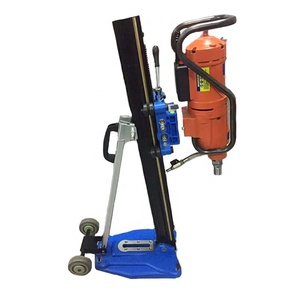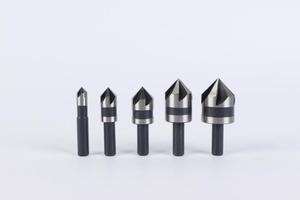(1271 products available)

































































































































































































There are three types of drilling inclinations, which are as follows:
Vertical Drilling
Vertical drilling is a conventional method where the borehole is drilled straight down. This technique is primarily used in mineral exploration, groundwater extraction, and conventional oil and gas drilling. Vertical drilling offers several advantages, including simplicity, cost-effectiveness, and reduced complexity. Additionally, it provides a straightforward approach to reaching deposits directly beneath the surface.
Horizontal Drilling
Horizontal drilling involves drilling at a right angle to the surface layer once a certain depth is reached. This method creates a horizontal borehole that runs parallel to the targeted deposit. Horizontal drilling is particularly useful for extracting resources from extensive, shallow deposits, such as shale gas or coal bed methane. It allows for increased access to the resource and minimizes surface disruption. This technique has gained popularity due to its effectiveness in tapping into resource-rich formations with minimal environmental impact.
Inclined Drilling
Inclined drilling involves drilling at a specific angle, which can be adjusted to suit the geological formation and the resource being targeted. This method allows drillers to reach deposits that cannot be accessed through vertical or horizontal drilling. Inclined drilling is commonly used in geothermal drilling, some mineral extraction processes, and complex oil and gas reservoirs. By drilling at a precise angle, drillers can penetrate targeted formations more efficiently, leading to improved resource extraction and reduced drilling costs.
Drilling inclination is a critical parameter in various fields and applications. Here are some key usage scenarios:
Oil and Gas Exploration
Drilling inclination is crucial for the development of wells. During the drilling of oil and gas wells, the inclination is controlled to ensure that the well reaches the target reservoir. This minimizes the risk of hitting non-productive areas and maximizes the efficiency of resource extraction. Additionally, inclination helps in avoiding geological hazards and maintaining wellbore stability.
Mineral Exploration and Mining
In mineral exploration and mining, drilling inclination is utilized to target specific ore deposits. Inclined drilling allows for more accurate sampling and extraction of minerals, particularly in steep or complex geological formations. This targeted approach improves the economic viability of mining operations.
Civil Engineering and Construction
Drilling inclination is applied in geotechnical investigations to assess soil and rock conditions for construction projects. Inclined boreholes can provide essential data on subsurface conditions, allowing for informed decisions on foundation design and construction methods. This contributes to the safety and stability of structures.
Environmental Studies
In environmental studies, drilling inclination is used to monitor and assess subsurface conditions. Inclined wells can be used to track contaminants, study aquifer properties, and evaluate potential environmental impacts. This data is vital for developing effective environmental management strategies.
Geothermal Energy
Drilling inclination is employed in geothermal energy projects to access geothermal reservoirs. Accurate inclination control ensures that wells penetrate heat-rich zones, optimizing energy extraction. This contributes to the efficiency and sustainability of geothermal energy production.
Hydraulic Fracturing
In hydraulic fracturing operations, drilling inclination is important for creating artificial fractures in rock formations. These fractures enhance the permeability of the rock, allowing oil and gas to flow more easily to the wellbore. Inclination control is essential for targeted fracturing and maximizing resource recovery.
Underground Storage
Drilling inclination is used in projects involving underground storage of gases (like natural gas) or liquids. Accurate inclination ensures that storage caverns are precisely located and constructed, minimizing leakage risks and maximizing storage capacity.
Choosing the right orientation for drilling is a crucial aspect of construction and geological exploration. Different factors come into play when deciding the best inclination for drilling. Here are some key considerations:
Type of Soil or Rock
The kind of material being drilled into is a primary factor. In cohesive soils like clay, vertical or near-vertical drilling may be suitable because these types of soils tend to hold their shape well. However, in granular soils like sand, where particles can easily shift, a slight inclination might be better to provide stability and reduce the risk of collapse.
Purpose of Drilling
The intended purpose of the drilling also affects the choice of inclination. For instance, in foundation drilling, achieving a vertical inclination is often necessary to reach the required depth and ensure proper support for the structure. On the other hand, when drilling for retaining walls or similar structures, a slight inclination can help transfer loads more effectively.
Depth of Drilling
The depth of the drilling operation can also influence the inclination. As the depth increases, the likelihood of encountering different soil or rock layers becomes more significant. Therefore, a vertical inclination is often preferred for deep drilling to maintain consistency and predictability in the material being drilled through.
Drilling Method
The chosen drilling method can also affect the inclination. For example, rotary drilling, commonly used for deep foundations and pile drilling, requires a vertical inclination to ensure the drill bit remains within the intended path. Conversely, trenching or auger drilling may allow for slight inclinations without impacting the accuracy or effectiveness of the operation.
Regulations and Guidelines
Local regulations, industry standards, and guidelines set specific requirements for drilling inclinations, especially in urban areas or regions with strict environmental protections. These regulations ensure the safety and integrity of the drilling operation and protect surrounding structures and ecosystems.
Display Units: LED or LCD
These display types are critical as they show the current inclination or angles of the tool. Additionally, they provide clear readings of the drilling inclination. Most tools have backlit displays that are useful in low-light conditions.
Measurement Range: Sufficient range
Most tools have a measurement inclination range of 0-360 degrees. Also, they have an accuracy of about ±0.1 to ±0.5 degrees. This ensures precise measurements during all drilling stages.
Battery Life: Long-lasting
These tools consume a lot of power. Therefore, they require batteries that can last long or are rechargeable. Some tools have battery life indicators, which are useful since they ensure the tool is operational during drilling.
Calibration: Simple
The tools need to be calibrated from time to time to ensure they provide accurate measurements. Most come with simple manuals that guide users on how to calibrate the tool.
Durability: Strong construction
The drilling inclination tools are made of strong materials, which can withstand harsh drilling conditions. Most tools have protective casings that are waterproof and dustproof. This increases their lifespan.
Data Logging: Useful for storing data
These tools can log data, which is useful for storing drilling records. This enables the drilling team to track changes in inclination over time. Additionally, they can analyze trends. The logged data can be transferred to computers or other devices for further analysis.
Mounting Options: Versatile
Tools for measuring drilling inclination have versatile mounting options. This makes them easy to install on different drilling equipment or stands.
Shape: Usually, the tools have a cylindrical or rectangular shape. This ensures they easily fit on the drilling equipment.
Fittings: These tools have universal fittings that make them compatible with various drilling rigs and rods.
Wireless Connectivity: Some tools have wireless connectivity options. This enables them to connect with other devices like computers or smartphones. This makes it easy to transfer data and monitor inclination remotely.
Q1: What does a positive inclination mean?
A1: A positive inclination means that the drill bit is moving upwards toward the surface of the earth.
Q2: How does one calculate drilling inclination?
A2: To calculate drilling inclination, one uses a clinometer or inclinometer. These tools measure the angle of inclination. The tools provide measurements that are essential for calculating the inclination angle.
Q3: Why is drilling inclination important?
A3: Drilling inclination is important because it helps to ensure safety during drilling. It also helps to minimize environmental impacts and maintain the structural integrity of the well.
Q4: What are the factors that affect drilling inclination?
A4: Several factors affect drilling inclination. They include geological formations, drilling parameters, and human activities.